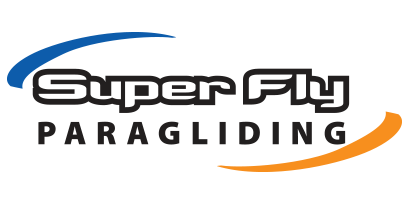Is Paramotoring Safe? A Safety Guide for Beginners
Posted on December 10 2024
Imagine standing at the edge of an open field, the early morning light spilling across the horizon. Your heart races as you glance at the paramotor strapped to your back, excitement battling with hesitation. You've heard the stories—thrilling flights, breathtaking views—but also whispers of mishaps and risks.
At Super Fly, we understand this mix of excitement and uncertainty. We've written this blog to clear up misconceptions, highlight key safety practices, and help you embrace the skies confidently. Whether you're a beginner or looking to refine your skills, we're committed to making paramotoring a safe, exhilarating experience.
The Role of Paramotor Helmets in Safety
Wearing a well-fitted paramotor helmet is one of the most crucial safety elements in paramotoring. While it may seem like common sense, the importance of a helmet cannot be overstated. A paramotor helmet doesn't just protect your head during unexpected events like hard landings but shields you from noise and wind, enhancing communication and focus.
Key factors when choosing a helmet include:
- Comfort and Fit: A snug but comfortable fit is essential to prevent the helmet from shifting during flight.
- Noise Reduction: Many paramotor helmets have ear protection or built-in noise-canceling to reduce engine noise and ensure clear dialogue with instructors or team members.
- Type Approval: Look for helmets that meet aviation safety standards for an extra measure of reliability.
By investing in a high-quality paramotor helmet, you're taking a significant step toward safer flights. Super Fly offers a range of reliable, aviation-approved helmets designed for comfort and performance.
Understanding Powered Paraglider Techniques for Safety
Another key to ensuring safety when paramotoring lies in mastering powered paraglider techniques. Training is essential—taking shortcuts can significantly increase the risk of accidents. Here's how to approach training and operation like a pro:
1. Get Professional Training
Enroll in a paramotoring program to learn everything from pre-flight inspections to emergency procedures. Avoid self-teaching; experience matters in aviation sports.
2. Follow Weather Guidelines
Knowing how to assess weather conditions is vital. Calm winds and clear skies are ideal for beginner flights, while advanced pilots may choose to explore less predictable weather safely.
3. Stick to Proper Takeoff and Landing Techniques
Consistently practice takeoff and landing techniques during training to ensure smooth execution during actual flights. The motor's thrust allows for controlled ascent and descent, making it easier to avoid mishaps when mastering techniques.
Mastering these techniques starts with the right training. Super Fly's paramotoring lessons offer expert instruction to build your confidence and help you fly safely.
How Does Paramotoring Compare to Other Aerial Sports?
When evaluating the safety of paramotoring, it's essential to compare it to other aerial sports like traditional paragliding or powered paragliding. Paramotoring stands out due to the added benefit of a motor, which provides greater precision during takeoff and landing. This level of control minimizes many risks associated with non-powered paragliding and allows for a smoother learning curve for beginners.
Additionally, paramotoring offers remarkable flexibility in launching sites, as it doesn't rely on steep slopes or specific wind conditions. This accessibility makes it an attractive option for those new to aerial sports, while experienced pilots appreciate its enhanced maneuverability and independence. The motor does add extra weight and mechanical complexity, making regular equipment checks critical for safety.
Whether you're just starting or looking to refine your skills, paramotoring provides a unique combination of ease and control unmatched by many other sports.
How to Maximize Paramotoring Safety
While choosing the proper gear and receiving training is foundational, staying proactive during flights can further enhance your level of safety. Here are some tips to help you stay safe and get the most out of your flights:
Conduct Pre-Flight Inspections
Before every flight, inspect your paramotoring equipment thoroughly. Ensure the motor runs smoothly, the wing is free of tears or tangles, and the lines are properly secured.
Avoid Overconfidence
Even seasoned aviators recognize that overconfidence is a leading cause of preventable mishaps. Always approach paramotoring with caution and respect.
Choose Quality Gear
Using durable, high-quality equipment, from your paramotor helmet to your powered paraglider, is non-negotiable. Investing in trusted brands can save you from unnecessary risks.
Gradual Skill-Building
If you're new to paramotoring, consider exploring more straightforward maneuvers before moving on to advanced techniques like high-altitude flying or sharp turns. Gradually building confidence and competence will prepare you for more adventurous flights down the line.
The bottom line? Paramotoring has risks, like any other adventure sport—but with proper precautions, it can be an incredibly safe and rewarding experience. By equipping yourself with the right gear, learning the correct techniques, and taking a cautious approach, you can enjoy the skies with peace of mind. Whether you're looking to take your first flight or enhance your skills, Super Fly has everything you need to get started. From top-notch paramotor helmets to expert training lessons, our team is here to ensure your safety and enjoyment on every flight.
It's time to take off! Contact us today and start your paramotoring adventure!

0 comments